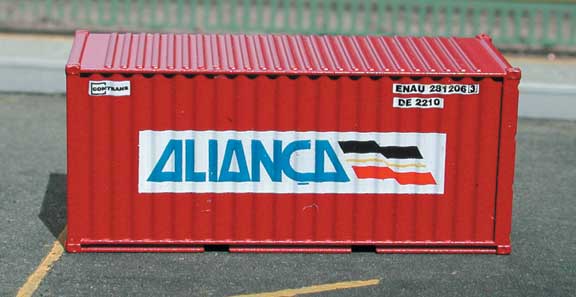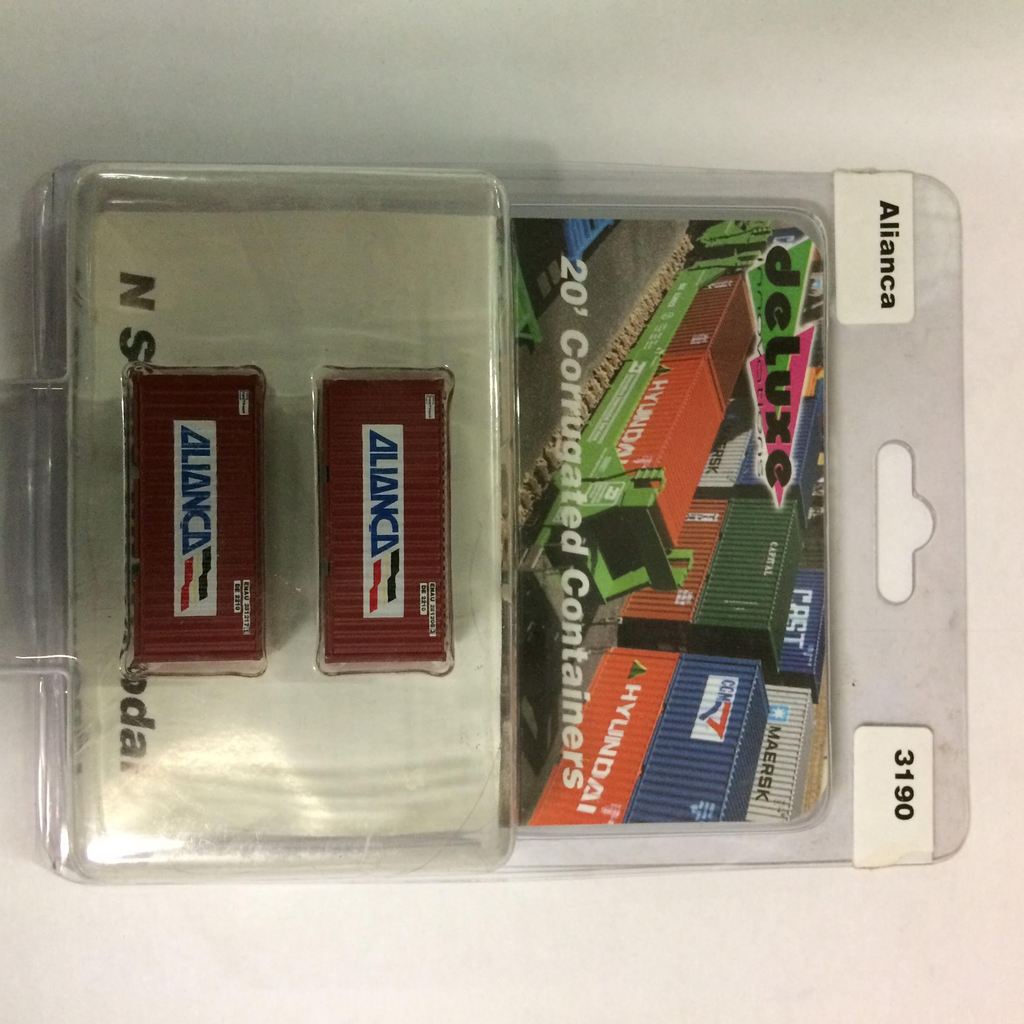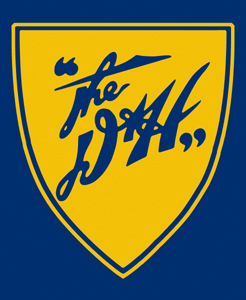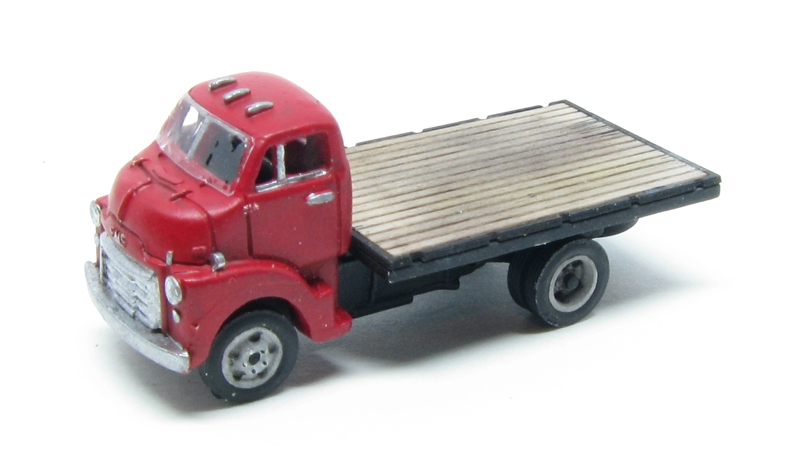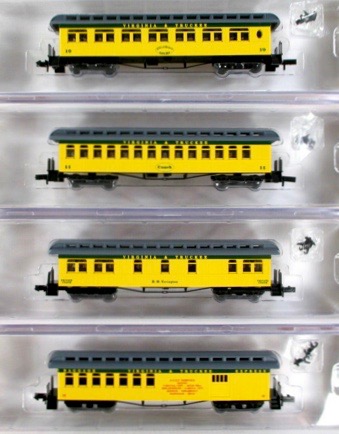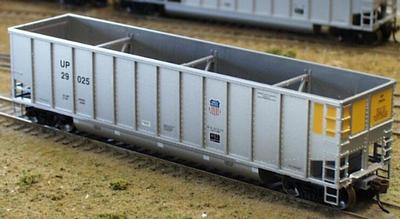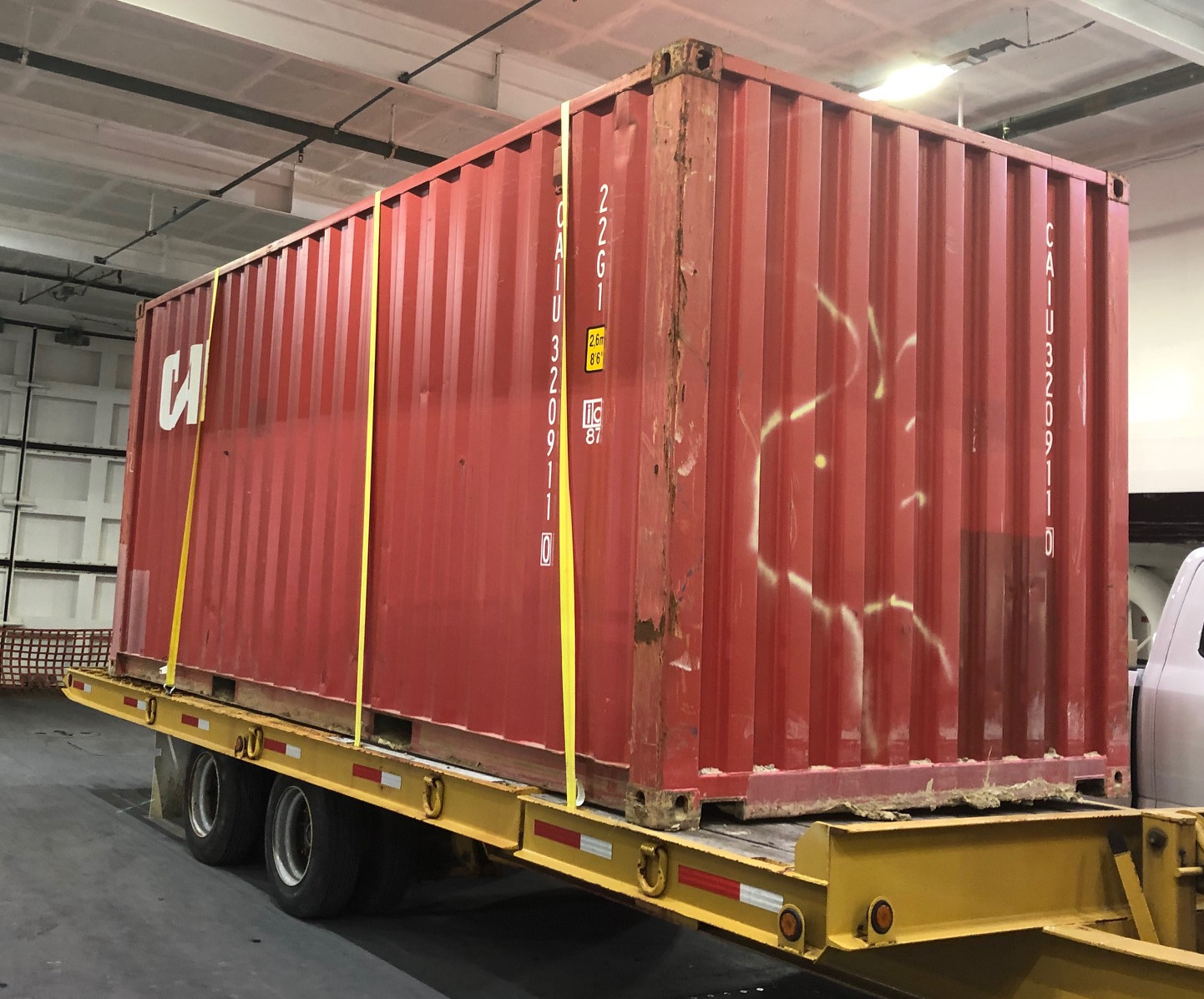Deluxe Innovations - 3190 - Container, 20 Foot, Corrugated, Dry - Alianca - 2 numbers
| Stock Number | 3190 |
| Original Retail Price | $13.85 |
| Brand | Deluxe Innovations |
| Manufacturer | Deluxe Innovations |
| Body Style | Deluxe Innovations Container 20 Foot Corrugated |
| Prototype Vehicle | Container, 20 Foot, Corrugated, Dry (Details) |
| Road or Company Name | Alianca (Details) |
| Road or Reporting Number | 2 numbers |
| Paint Color(s) | Red |
| Print Color(s) | White, Red and Black |
| Multipack | Yes |
| Multipack Count | 2 |
| Announcement Date | 2017-08-01 |
| Release Date | 2002-12-01 |
| Item Category | Container |
| Model Type | Intermodal |
| Model Subtype | 20 Foot |
| Model Variety | Corrugated, Dry |
| Prototype Region | North America |
| Prototype Era | NA Era V: Modern Diesel (1979 - Present) |
| Scale | 1/160 |
Prototype History:
Given the prevalence of 40 foot containers in the global shipping/maritime industry, the 20 foot container was a logical choice for smaller cargoes. Given that exactly two 20 foot containers can stack on or be stacked on a 40 foot container, these little brothers are a no-brainer for smaller loads. Cargo ships specially designed for 40 foot containers can usually handle these smaller units without specialized loading equipment or facilities.
Dry containers are meant for non-refrigerated goods and hence are the most common type.
Corrugation in the construction of these containers yields much greater strength (just like with corrugated cardboard for boxes) but is more expensive to fabricate. Due to the extra strength granted by the corrugation, this is a popular type for overseas use.
Dry containers are meant for non-refrigerated goods and hence are the most common type.
Corrugation in the construction of these containers yields much greater strength (just like with corrugated cardboard for boxes) but is more expensive to fabricate. Due to the extra strength granted by the corrugation, this is a popular type for overseas use.
Road Name History:
The history of Aliança Navegação e Logística is intertwined with the history of Brazilian commercial shipping. Carl Fischer, a German, founded Aliança in 1950. The company began its operations with just one ship, which transported fruit between Brazil and Argentina.
In 1998, Aliança was acquired by the Oetker Group, owner of the Hamburg Süd Shipping line and expanded its activities, including new itineraries connecting the Gulf of Mexico, Europe, Central America, the Caribbean, Asia and Brazil. In 1999, the company was a pioneer in winning back the transport of containerized cargo between Brazilian ports.
In 1998, Aliança was acquired by the Oetker Group, owner of the Hamburg Süd Shipping line and expanded its activities, including new itineraries connecting the Gulf of Mexico, Europe, Central America, the Caribbean, Asia and Brazil. In 1999, the company was a pioneer in winning back the transport of containerized cargo between Brazilian ports.
Brand/Importer Information:
DeLuxe Innovations is a "wholesale manufacturer" of model trains. We manufacture scale replica train models and sell them to hobby shops and distributors worldwide. 2013 marked the 20 year anniversary of DeLuxe Innovations brand trains. There are over 25 body styles in our product line and all of the cars in our single and multi-car packs have different road numbers. DeLuxe Innovations, Inc. is owned by Dave Ferrari, founder of Squeak N Products. We are located in Midland Park, New Jersey. When Dave purchased the business it was located in Burbank, California which would have been a bit of a long commute so the move to the East Coast was planned. Our first East Coast location was in Whippany, NJ along the Whippany River.
The business was started in 1993 by George Johnsen and Roberta Liebreich in Burbank, California. They had a philosophy that just wouldn't allow using a coal car as a "stand in" for a woodchip car, or printing any and all boxcar paint schemes on a PS-1. Starting with the release of the first ever etched metal parts for a ready to run car (1994's Twinstack's metal walkways) through the full dimension underframe and etched metal roofwalk (1996's 1944 AAR Boxcar) to the challenging RoadRailer system (2000), our products have been accurate to target the modeler or enthusiast.
You can also follow DeLuxe on Twitter
The business was started in 1993 by George Johnsen and Roberta Liebreich in Burbank, California. They had a philosophy that just wouldn't allow using a coal car as a "stand in" for a woodchip car, or printing any and all boxcar paint schemes on a PS-1. Starting with the release of the first ever etched metal parts for a ready to run car (1994's Twinstack's metal walkways) through the full dimension underframe and etched metal roofwalk (1996's 1944 AAR Boxcar) to the challenging RoadRailer system (2000), our products have been accurate to target the modeler or enthusiast.
You can also follow DeLuxe on Twitter
Item created by: Powderman
on 2018-10-20 10:49:13
Last edited by: Alain LM on 2022-06-22 04:51:08
If you see errors or missing data in this entry, please feel free to log in and edit it. Anyone with a Gmail account can log in instantly.
Last edited by: Alain LM on 2022-06-22 04:51:08
If you see errors or missing data in this entry, please feel free to log in and edit it. Anyone with a Gmail account can log in instantly.


